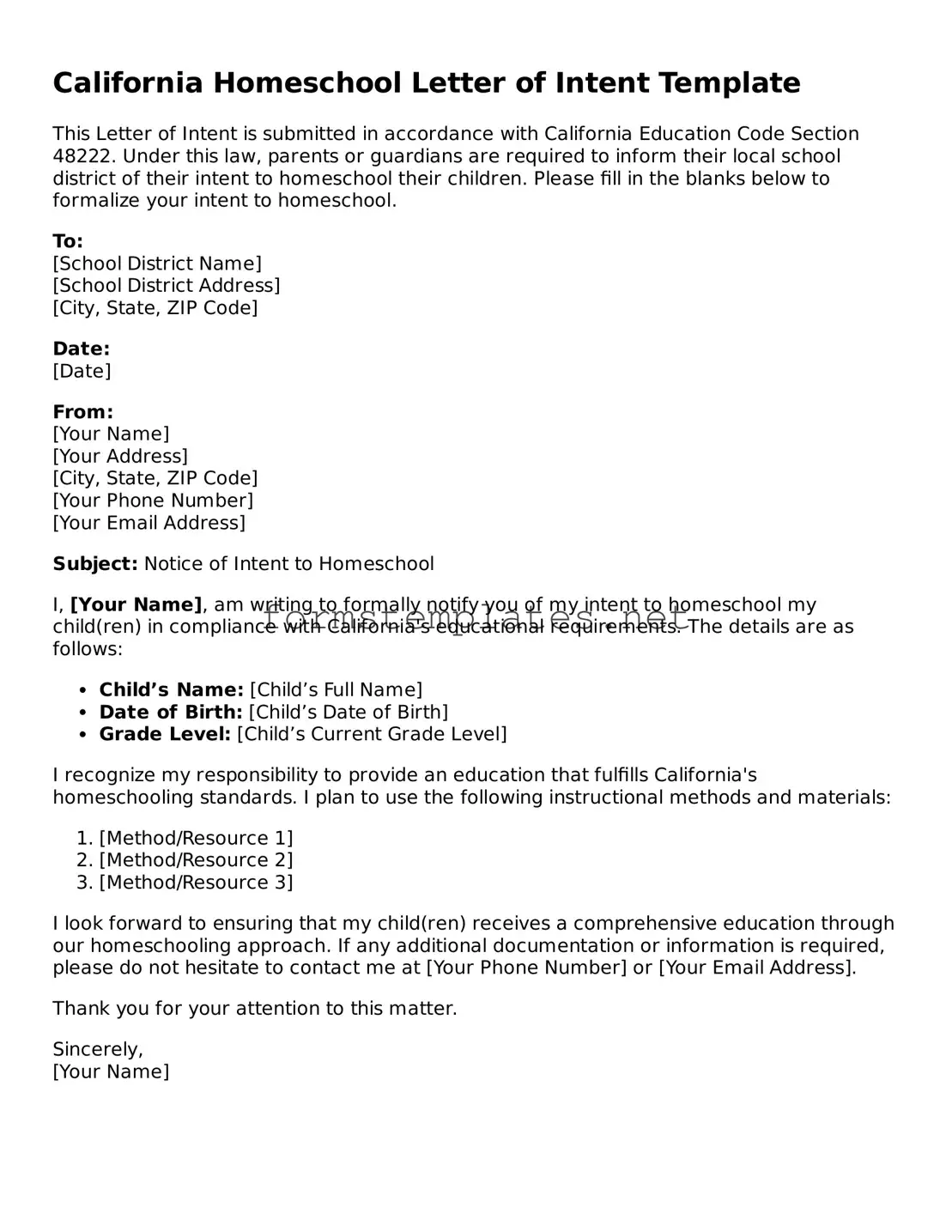California Homeschool Letter of Intent Template
This Letter of Intent is submitted in accordance with California Education Code Section 48222. Under this law, parents or guardians are required to inform their local school district of their intent to homeschool their children. Please fill in the blanks below to formalize your intent to homeschool.
To:
[School District Name]
[School District Address]
[City, State, ZIP Code]
Date:
[Date]
From:
[Your Name]
[Your Address]
[City, State, ZIP Code]
[Your Phone Number]
[Your Email Address]
Subject: Notice of Intent to Homeschool
I, [Your Name], am writing to formally notify you of my intent to homeschool my child(ren) in compliance with California's educational requirements. The details are as follows:
- Child’s Name: [Child’s Full Name]
- Date of Birth: [Child’s Date of Birth]
- Grade Level: [Child’s Current Grade Level]
I recognize my responsibility to provide an education that fulfills California's homeschooling standards. I plan to use the following instructional methods and materials:
- [Method/Resource 1]
- [Method/Resource 2]
- [Method/Resource 3]
I look forward to ensuring that my child(ren) receives a comprehensive education through our homeschooling approach. If any additional documentation or information is required, please do not hesitate to contact me at [Your Phone Number] or [Your Email Address].
Thank you for your attention to this matter.
Sincerely,
[Your Name]
